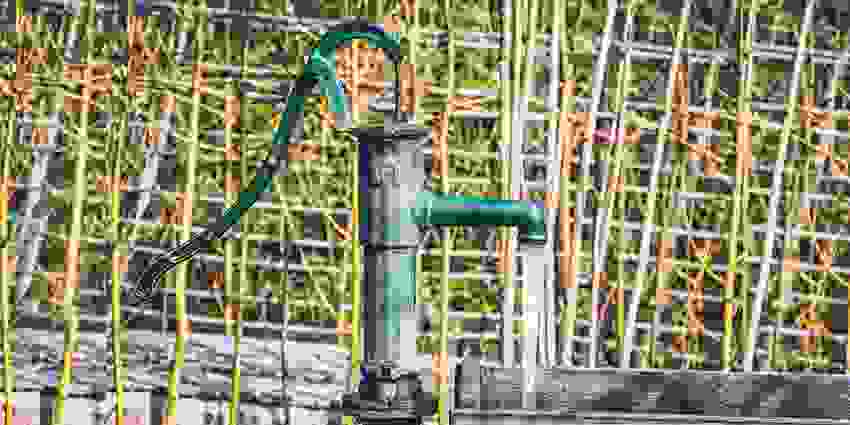For the month of March, we are spotlighting our groundwater programs, which include the Texas Well Owner Network (TWON), the Ogallala Aquifer Program (OAP), the Ogallala Water Coordinated Agricultural Project (Ogallala Water CAP) and the Transboundary Water Portal.
Texas Well Owner Network
Helping to protect Texas’ groundwater resources, TWON has Well Informed screenings and Well Educated training courses offered by the Texas A&M AgriLife Extension Service in cooperation with the Texas State Soil and Water Conservation Board and other partner agencies and organizations. The TWON program is for Texas residents who depend on household wells for their drinking water needs and want to become familiar with water quality, water treatment and well maintenance best practices.
The Texas Water Resources Institute (TWRI), along with AgriLife Extension's Department of Soil and Crop Sciences and the Department of Biological and Agricultural Engineering, developed TWON to deliver a science-based, community-responsive education curriculum with a focus on protecting ground water quality and aquifer integrity.
Ogallala Aquifer Program
The OAP, funded by U.S. Department of Agriculture (USDA)’s Agriculture Research Service (ARS) since 2003, consists of research and extension teams from USDA, Texas Tech University, Kansas State University, West Texas A&M University and Texas A&M AgriLife Research. The OAP has provided permanent federal funding to a research consortium for numerous research projects on water conservation for the Ogallala Aquifer, which is being depleted as withdrawals exceed the recharge rate.
The Ogallala Aquifer is the largest underground water reservoir in the United States, covering 174,000 square miles in Nebraska, Kansas, Oklahoma, Texas, South Dakota, Wyoming, Colorado and New Mexico. It is a major source of water for agricultural, municipal and industrial development on the High Plains. The OAP focuses on improving the sustainability of agricultural industries and rural communities through innovative scientific research and technology transfer.
Ogallala Water Coordinated Agricultural Project
The Ogallala Water CAP is funded by USDA’s National Institute of Food and Agriculture and consists of faculty from Colorado State University, University of Nebraska, New Mexico State University, Kansas State University, Oklahoma State University, Texas Tech University, AgriLife Research, AgriLife Extension, Texas A&M Engineering Experiment Station’s Texas Center for Applied Technology, West Texas A&M University and ARS.
According to the Ogallala Water CAP website, the project is focused on ways to help Ogallala-region producers and other decision makers sustain productive, profitable agriculture and effectively mitigate risks related to the Ogallala Aquifer’s decline. The Ogallala Water CAP team works across state lines to share its accumulated expertise, information and networks with the mutually held goal of accelerating innovation and the adoption of adaptive management strategies critical to the economy and longevity of the region’s communities.
Transboundary Water Portal
The U.S. Geological Survey (USGS) project, the Transboundary Aquifer Assessment Program (TAAP), was created by the U.S.-Mexico Transboundary Aquifer Assessment Act of 2006 to conduct binational scientific research to systematically assess priority transboundary aquifers and to address water information needs of border communities.
TAAP collaborators include the USGS water science centers and water resources research institutes of Arizona, New Mexico and Texas, the International Boundary and Water Commission (IBWC), stakeholders and Mexican counterparts. There are also collaborators who are working on transboundary water issues between Mexico and Texas from social, political and cultural perspectives.
As part of the TAAP's project, TWRI created the Transboundary Water Portal website, a binational data center co-hosted by the Mexican Institute of Water Technology (IMTA). The portal’s purpose is to integrate and share data related to transboundary surface water and groundwater resources between Mexico and the United States. It also serves as a portal for a binational network of members from both sides of the border that are working on transboundary water issues.
To learn more about groundwater and our groundwater-related programs, read articles from Conservation Matters and txH2O publications:


